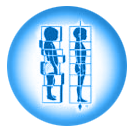
Home
Professional Bio
Rolfing
Rolfing FAQs
Feldenkrais
Classes
Testimonials
Links
Contact
|
The Feldenkrais Method® of somatic education uses gentle attentive movement to enhance your ability to feel and use your body in more graceful and efficient ways. There are two complementary components to the Feldenkrais method: group movement lessons, known as Awareness Through Movement®, and private hands-on lessons known as Functional Integration®. Feldenkrais Awareness Through Movement classes use novel, ingenious movements to help you explore and expand your range of efficient, pain-free action. They do this, in part, by helping you sense the nuances of how you move, how you get ready to move, and how you unconsciously prevent yourself from moving well. The lessons make you more graceful both by helping you differentiate movement (so you don't have to turn your whole torso to look to the left, for example) and at the same time learn to move with the whole of yourself (moving your arms from your back, your pelvis, even your feet, or walking with your whole spine). And though most people come to Awareness Through Movement because of its physical benefits, many find that it not only helps them to move better but also to be more present and resilient in all areas of life. Functional Integration--the one-on-one hands-on sessions--uses a combination of gentle touch and movement to accomplish those same ends. You can think of these sessions as private, personalized Awareness Through Movement lessons. Functional Integration sessions can be particularly helpful for people who want to work on some specific problem or goal, or who have pain or mobility issues that prevent them from doing group classes. They also make a great adjunct to the classes and vice versa: Awareness Through Movement lessons can serve as "homework" for the Functional Integration sessions and the sessions can help clarify or augment something you did in an Awareness Through Movement lesson.
|
